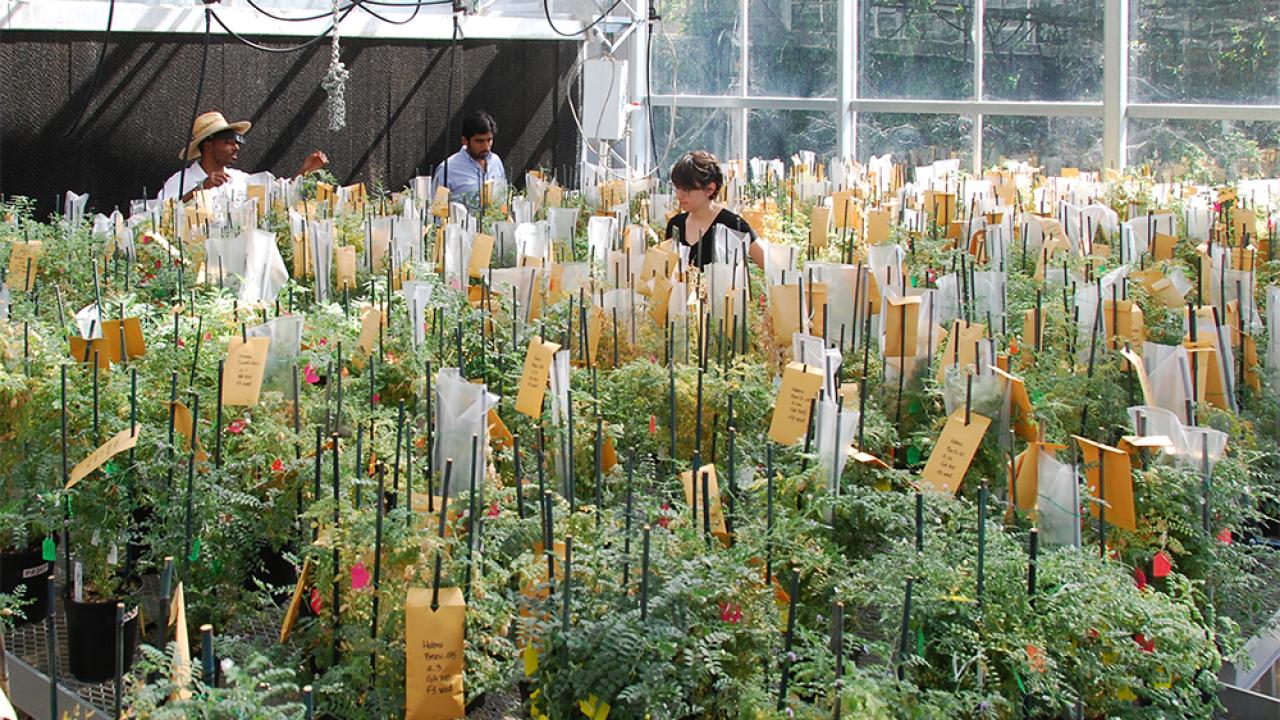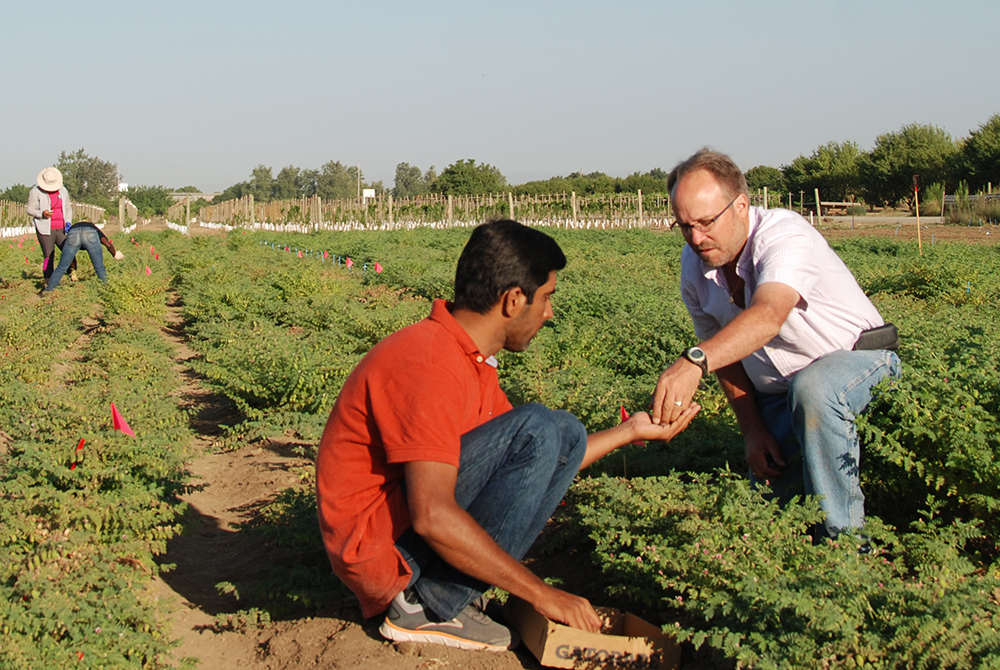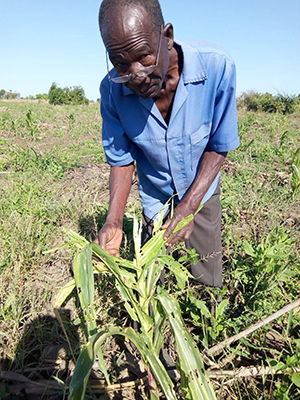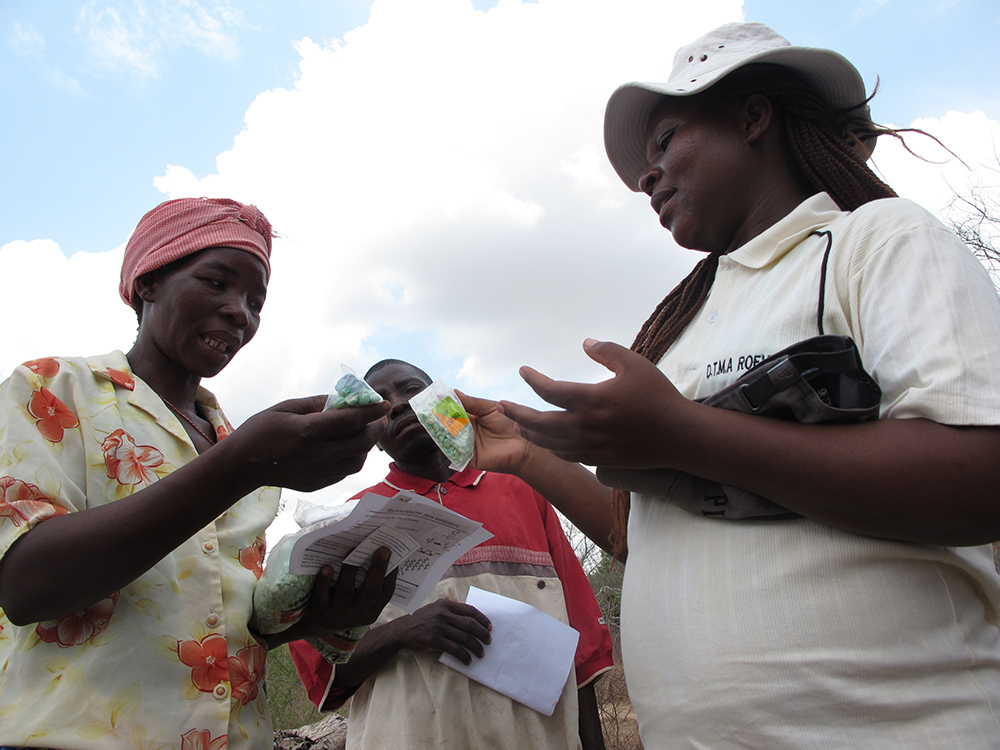
The Challenge of Taking Chickpea Innovations from the Lab to the Field
In 2014, Douglas Cook came to a realization about chickpeas in Ethiopia while having lunch with a local researcher. Cook, director of the Feed the Future Climate Resilient Chickpea Innovation Lab at UC Davis, was talking about his work developing drought-resistance in the crop. The local researcher told him that in Ethiopia drought was not the major problem.
“In Ethiopia, drought is a problem but it’s inescapably entangled with other factors,” Cook said this July. “Chickpea production is limited by a range of factors, including damaging fungal disease, insect pests, poor rates of nitrogen fixation and, frankly, insufficient resources to support optimal agronomic practices.”
This means that while you obviously can’t grow a plant without any water, simply developing drought tolerant plants won't necessarily translate to abundant yields of chickpeas.
By transforming how chickpeas can withstand a complex set of problems beyond just drought, Cook hopes to aid smallholder farmers in Ethiopia and other countries. But ultimately, getting these improved varieties to farmers in the field is a complex task that requires work beyond just the laboratory.
“The pathway for getting research results to the farmer is not a trivial undertaking and requires expertise and effort beyond the laboratory bench,” Cook said.
Breeding a More Resilient Chickpea
Nutrient-dense legumes like chickpeas are incredibly important in Ethiopia. The country’s reliance on nutrient-rich, plant-based foods is due in part to cultural and religious factors.
Members of the Ethiopian Orthodox Tewahedo Church, nearly half the country’s population, fast for considerable periods each year. During fasting, animal sources of protein are typically not consumed, and the population instead relies on protein-rich legumes, such as chickpea, for their daily allowance of dietary protein.
Chickpea farmers, meanwhile, are confronted with an array of environmental issues. Chickpeas are grown at the end of the rainy season, relying upon residual moisture in the soil. This puts the crop at risk of terminal drought, a situation that occurs when insufficient water remains in the ground to support yields at the end of the season.
A seemingly obvious solution is to plant the crop earlier, during the rainy season. However, the reality is that planting when moisture is abundant can bring other, more serious risks. This includes devastating fungal diseases such as ascochyta blight, a fungi which becomes rampant when moisture is high. Planting later in the season to avoid disease brought by high moisture, meanwhile, not only increases the risk of terminal drought, but also promotes disease caused by a different soil fungus that thrives in drier soils.
"It's really a darned if you do, darned if you don't scenario,'' said Cook. “You can’t solve the problem of drought if you don’t solve the problem of disease. But you can’t solve the problem of disease if you don’t solve the problem of water. They are interconnected and inextricable.”

Cook’s team at the Chickpea Innovation Lab is trying to overcome these challenges by increasing the genetic diversity in chickpeas. Cook and his team are using genes from the wild relatives of chickpea to expand the genetic base and emphasize traits that can improve the crop. The result could be higher yields with less water and resistance to fungal pathogens. His team is also experimenting with microbes to improve nitrogen fixation and working with local partners to make the process commercially viable.
For countries facing food insecurity, this kind of innovation can pay dividends. Getting these improved crops to the farmers themselves, however, remains the challenge — especially when farmers are short of the cash needed to buy improved seeds.
“Smallholder farmers are undercapitalized in essentially every area,” said Cook. “That makes it difficult for investments like ours to take full hold. It’s something I think has to be solved in parallel.”
Overcoming the Barrier of Risk
Encouraging farmers to adopt higher-yielding seed varieties or improved agricultural techniques has been a challenge in the developing economies, particularly in sub-Saharan Africa. The African Union’s New Partnership for Africa’s Development (NEPAD), estimates that 80 percent of Africa’s farmers — some 33 million families — work on two hectares or less, and are less likely to adopt new agricultural technologies because of the financial risks.
“Getting improved seeds and other technologies to farmers is a real challenge,” notes Michael Carter, director of the MRR Innovation Lab at UC Davis. “It’s a problem that runs even deeper than whether or not local suppliers carry them and how much we can bring down their cost. We found that risk is actually a primary reason why families don’t adopt technologies that can transform how much food they can grow.”

The MRR Innovation Lab has focused much of its work on getting agricultural technologies from the test plot to neighborhood farms. Widespread dangers like natural disasters can keep these technologies from reaching smallholder farmers.
For example, a maize farmer who has the opportunity to invest in a proven higher yielding variety may be discouraged if there is a chance they might still lose their whole crop in a severe drought. When entire livelihoods are on the line, farmers may stick to the status quo of lower-yielding traditional varieties instead of opting for a new, riskier investments.
“So while plant-breeding scientists are very much trying to raise the ceiling with plant productivity — and that’s obviously an important thing to do — we’re more concerned with closing the yield gap,” said Carter. “This means understanding the constraints that prevent farmers from adopting technologies that seem to be profitable or productive.”
Taking Drought Tolerant Maize to the Field in Africa
The International Maize and Wheat Improvement Center (CIMMYT) has had a great deal of success in promoting the adoption of drought-resistant maize among smallholder farms in sub-Saharan Africa. CIMMYT’s Drought Tolerant Maize for Africa (DTMA) project, conducted from 2006 to 2015, led to a 20 to 30 percent increase in yields for some 40 million people in 13 different countries.
“In a developing country you can see the danger of a drought event with these other, older varieties,” said Paswel Marenya, a research economist with CIMMYT. “Our research was thus concerned with minimizing these through maize genetic improvement of maize.”
While Marenya said that DTMA was primarily a breeding program, delivery also remained focus of the project. Researchers hoped to market and encourage seed providers to adopt the improved seed varieties.
Marenya said that the lessons learned in the DTMA project have also been applied to a number of ongoing CIMMYT programs more heavily targeting adoption. This includes the Drought Tolerant Maize for Africa Seed Scaling (DTMASS) project, which aims at increasing access to high-quality maize. An important component of DTMASS project was the UC Davis-led component on supplementing the drought tolerance of the new maize varieties index insurance to get the best of both worlds.

However, additional constraints remain when it comes to finding the most efficient way to get improved seeds to smallholder farmers specifically — especially among those who may be away from highly commercialized areas.
“Projects such as these support the growth and development of small and emergent seed companies to serve many smallholder farmers currently not well served by existing companies,” said Marenya. “In most countries the seed market is dominated by only a few, or by the state, which means the seed markets are not well developed. Entrepreneurs may be disincentivized from starting small seed companies because of low technical capacity in maize breeding and the high costs of finance as well as high levels of agribusiness risks.”
The Future Prospects of Innovation
In August, just south of the UC Davis campus in northern California, Cook and his graduate student researchers from Pakistan, Somalia and the U.S. were crouched in rows taking a closer look at some of the plants they had been growing. It had been hot this summer and the plants were approaching maturity.
Right now Cook is focused most on fusarium wilt resistance, increased nitrogen fixation, tolerance to acidic soils and improved diagnostic tools. He is also currently exploring avenues to improve production systems and expand distribution to farmers through Ethiopia’s public and private sector capabilities.
Success in these areas, along with the strong government and corporate interest his work has provoked, may ultimately increase the prospects of exporting his research from a field like this one in Davis, California to smallholder farmers across the world.
“Given sufficient resources and sustained commitment from sponsors and partners, we can have both immediate and downstream impact at different levels in the agricultural value chain,” says Cook.
